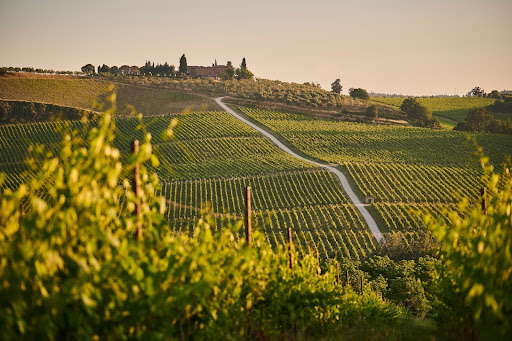Travel And Taste: A Journey Through The World's Best Wine Regions
Wine tourism, or enotourism, is a captivating way to explore the world, offering a sensory journey through some of the most picturesque landscapes and culturally rich regions.
Author:Maya ReyesReviewer:Finn WildeJun 04, 20241.8K Shares264.3K Views

Wine tourism, or enotourism, is a captivating way to explore the world, offering a sensory journey through some of the most picturesque landscapes and culturally rich regions.
It involves traveling to wine-producing areas to experience and enjoy their wines, often including visits to vineyards, wineries, and wine festivals.
Beyond just tasting wine, it encompasses learning about winemaking processes, meeting winemakers, and immersing oneself in the local culture and traditions.
What Is Wine Tourism?
Wine tourism, or enotourism, refers to travelfocused on experiencing and enjoying wineand winemaking regions. It typically includes visits to vineyards, wineries, and cellars, participation in wine tastings and tours, and often involves gourmet dining, wine festivals, and events centered around wine culture.
Importance And Benefits Of Wine Tourism
Wine tourism offers numerous benefits, both for travelers and wine-producing regions. For travelers, it provides a unique and immersive way to learn about and appreciate wine, enhancing their understanding and enjoyment of different varieties and winemaking techniques. It also offers a rich cultural experience, as visitors explore local history, traditions, and cuisine.
For wine regions, wine tourism is an important economic driver. It helps boost local economies by attracting tourists, creating jobs, and promoting local products. It also fosters a deeper connection between consumers and producers, enhancing brand loyalty and increasing wine sales.
Napa Valley, USA
Napa Valley, located in California, is one of the world's most famous wine regions. Known for its premium wines, particularly Cabernet Sauvignon, Napa Valley is home to over 400 wineries, each offering unique experiences.
The region's Mediterranean climate, diverse soils, and innovative winemaking techniques contribute to its reputation for producing high-quality wines.
Key Wineries And Experiences
Napa Valley offers a wide range of wine-related activities. Visitors can tour renowned wineries such as Robert Mondavi, Stag’s Leap Wine Cellars, and Opus One. These tours often include guided tastings, vineyard walks, and insights into the winemaking process.
The Napa Valley Wine Train provides a unique experience, combining gourmet dining with scenic vineyard views. Events like the Napa Valley Film Festivaland numerous wine festivals offer cultural enrichment alongside wine appreciation.
Bordeaux, France
Bordeaux, located in southwestern France, is one of the most prestigious and historically significant wine regions in the world.
Known for its exceptional red blends, particularly those made from Cabernet Sauvignon, Merlot, and Cabernet Franc, Bordeaux produces wines that are celebrated for their complexity, elegance, and aging potential.
Photo by Matthew Hintz
The region is divided into several sub-regions, each with its own unique terroir, including the Médoc, Saint-Émilion, and Pomerol.
Notable Wineries And Wine Tours
Bordeaux is home to some of the most renowned wineries and châteaux in the world. Château Margaux, Château Lafite Rothschild, and Château Latourare just a few of the legendary names that attract wine enthusiasts.
Many of these châteaux offer guided tours and tastings, allowing visitors to explore the vineyards, cellars, and winemaking processes.
Bordeaux Wine Tours and other specialized tour operators provide curated experiences, including visits to multiple châteaux, gourmet meals, and insights into the region's rich wine history.
Tuscany, Italy
Tuscany, located in central Italy, is renowned for its picturesque landscapes, historic cities, and exceptional wines.
The region is famous for its Sangiovese-based wines, particularly Chianti, Brunello di Montalcino, and Vino Nobile di Montepulciano. Tuscany’s rolling hills, dotted with vineyards and olive groves, create a stunning backdrop for wine tourism.
Famous Vineyards And Wine-Related Activities
Tuscany offers a wealth of wine-related activities. Visitors can tour iconic vineyards such as Antinori, Castello di Ama, and Tenuta dell'Ornellaia.
These wineries often provide tastings, cellar tours, and opportunities to learn about traditional and modern winemaking techniques.
The region also hosts numerous wine festivals, such as the Chianti Classico Wine Festival and the Brunello di Montalcino Festival, where visitors can sample a variety of local wines and enjoy regional cuisine.
Mendoza, Argentina
Mendoza, located at the foothills of the Andes Mountains in Argentina, is the heart of the country’s wine production.
Known for its Malbec wines, Mendoza offers stunning landscapes and a high-altitude climate that contributes to the unique characteristics of its wines. The region’s combination of sunny days, cool nights, and diverse soils make it ideal for viticulture.
Key Wineries And Unique Wine Experiences
Mendoza is home to many distinguished wineries, including Bodega Catena Zapata, Achaval Ferrer, and Bodegas Salentein. These wineries offer tours that include tastings, vineyard walks, and insights into the winemaking process.
Mendoza also provides unique wine experiences such as horseback riding through vineyards, picnics among the vines, and gourmet wine-paired lunches. The annual Malbec World Day celebration is a highlight, attracting wine lovers to Mendoza to celebrate its signature grape.
Barossa Valley, Australia
Barossa Valley, located in South Australia, is one of the country's oldest and most prestigious wine regions. Known for its robust Shiraz wines, Barossa Valley combines rich winemaking heritage with innovative practices.
The region’s Mediterranean climate and diverse soils create ideal conditions for growing a variety of grapes, including Shiraz, Grenache, and Riesling.
Prominent Wineries And Wine Tourism Activities
Barossa Valley is home to many renowned wineries, such as Penfolds, Jacob's Creek, and Henschke. Visitors can enjoy guided tours, tastings, and exclusive cellar door experiences.
The Barossa Vintage Festival, held biennially, is one of the oldest and most celebrated wine festivals in Australia, offering a wide array of events, including wine tastings, gourmet dining, and live entertainment.
The Barossa Heritage Trail provides a scenic route through the valley’s vineyards, historic sites, and charming towns.
Wine tourism offers a unique way to explore the world, combining the pleasures of travel with the joys of wine tasting and cultural immersion.
As wine tourism continues to grow, these regions not only provide unforgettable journeys for travelers but also play a crucial role in supporting local economies and preserving winemaking traditions.

Maya Reyes
Author
Maya Reyes’s wanderlust was sparked in the temples of Luang Prabang, where the scent of lemongrass and the chants of monks revealed the transformative power of travel.
Since then, her journey has been defined by cultural immersion and authentic connections. From learning batik in Indonesia to sharing meals with nomadic families in Mongolia, Maya seeks experiences that highlight the human stories behind each destination.
Travel for her is a way to weave her narrative into the world’s cultural tapestry, creating bridges across diverse ways of life. Maya has traveled to 15 countries and shares her insights through writing and storytelling.

Finn Wilde
Reviewer
For Finn Wilde, the wilderness is more than just a destination - it’s a way of life. Over the past decade, he has led multiple expeditions in some of the world’s most remote regions, from the icy fjords of Greenland to the rugged trails of Patagonia.
Finn emphasizes sustainability in all of his adventures, helping participants connect with nature while promoting responsible exploration. His expeditions inspire individuals to explore the great outdoors while fostering a deep respect for the environment.
Latest Articles
Popular Articles




